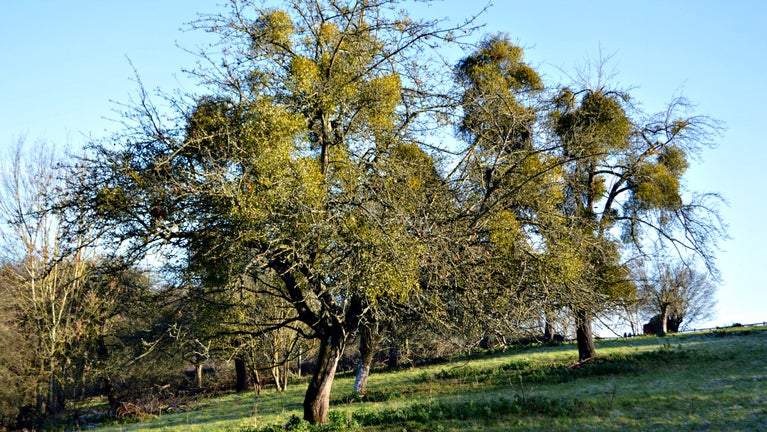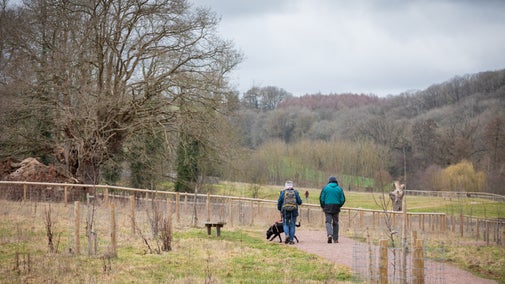
Donate
Everyone needs nature, now more than ever. Donate today and you could help people and nature to thrive at the places we care for.

It’s not just the medieval manor at Brockhampton that requires year-round conservation, but the 1,700-acre estate too. Wildlife is just as important as heritage here; read on and discover more about recent work the team have undertaken to help care for nature.
A large part of our work at Brockhampton is looking after our many old traditional orchards; pruning the trees to keep them healthy and long lived, ‘gapping up’ with new saplings, removing mistletoe where the tree is in danger of being overloaded, retaining deadwood for the benefit of insects and birds… traditional orchards are really important habitats for many invertebrate, bird and mammal species, so the Brockhampton orchard collection is very precious.

A family of badgers have resided in a large sett on the Brockhampton estate for many years. Concerns were raised by structural engineers that the sett was expanding rather closely to a large dam, making the surrounding area unstable, as well as the imminent threat of loss of water. So in 2022 we relocated the badgers and to date they have not returned the the old sett near the dam.

The team at Brockhampton have been working hard to help bees thrive on the 1,700-acre estate.
A group of volunteers enrolled on a monitoring course with The Bumblebee Conservation Trust to enable them to confidently identify and record bees throughout the estate and gardens.

Many of the meadows on the Brockhampton estate are left wild. Wildflowers in these meadows are favoured by bees as, unlike many modern hybrids, they are flat and open meaning nectar is in easy reach for the bee. By creating more wildflower meadows, we are increasing habitats for bees.
Bumblebees feed exclusively on pollen and nectar which is why the garden at Brockhampton is also planted in a bee-friendly way with foxgloves, lavender and daisies.
With your ongoing support, we're able to continue our vital conservation work. Thank you for helping to protect these special places.

Everyone needs nature, now more than ever. Donate today and you could help people and nature to thrive at the places we care for.
Explore the wider estate and parkland and look for the flora and fauna you can spot on a seasonal walk over this 1,700-acre estate.

At the heart of the estate lies Lower Brockhampton Manor house, a late 14th century timber-framed house, surrounded by a moat and entered via a timber-framed gatehouse.

Find out more about the orchards at Brockhampton and the ‘Reimagining’ the lost orchards project.

Uncover 600 years of history inside this timber framed manor house and learn how it evolved to meet the different needs of different generations who lived there.

Read about our strategy, which focuses on restoring nature, ending unequal access and inspiring more people.

We believe that nature, beauty and history are for everyone. That’s why we’re supporting wildlife, protecting historic sites and more. Find out about our work.
